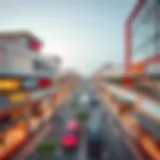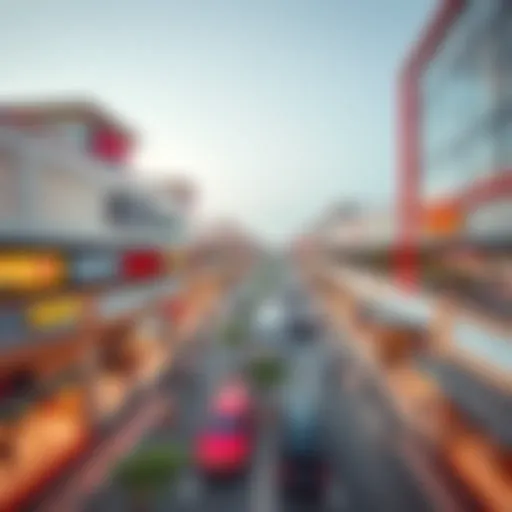Discovering the Visual Heritage of Dubai's Old City
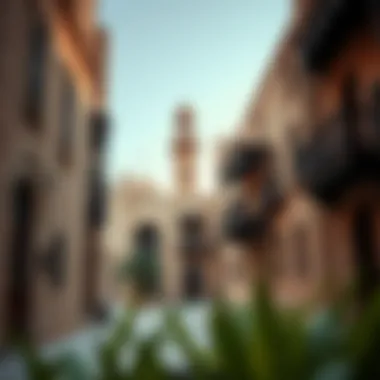

Intro
Dubai’s old city, a striking contrast to the glitzy, modern skyscrapers that dominate its skyline, tells a story of tradition and cultural depth. It’s an area where the echoes of a rich past still resonate, inviting visitors and investors to explore layers of history that often get overshadowed by the city’s rapid development. This exploration takes you through winding alleys, traditional souks, and stunning architectural gems, all captured through the lens of photography, bringing their beauty and significance to life.
Photography serves as a portal, transporting viewers into the heart of Dubai’s heritage. Each snapshot reveals unique elements: the intricately carved wind towers, vibrant textiles in the market stalls, and the resolute charm of mosques that anchor the community. The intent here goes beyond mere aesthetics; it shapes an understanding of how tradition coexists with modernity, paving the way for meaningful investment opportunities.
For those with an eye for potential, the old city stands as a testament to enduring value in real estate. As we delve into the nuances of this historical milieu, we'll not only highlight its visual splendor but also weave in insights for investors looking to tap into the market while appreciating the essence of this unique landscape.
Preamble to Dubai's Historical Context
Dubai, a city recognized for its breathtaking skyline and extravagant lifestyle, tells a different story when one delves into its old city. This historical context is vital in understanding the cultural and architectural jewels that have stood the test of time. Recognizing Dubai's historical foundation not only enhances appreciation of its contemporary visage but also sheds light on the values that meld tradition with modernity. Through this exploration, readers will grasp the paramount importance of this context in forming the backdrop against which the evolution of the city unfolds.
The Transformation of Dubai
The metamorphosis of Dubai from a modest fishing village to a global hub of trade and commerce is a compelling saga. In the mid-20th century, the city was largely dependent on pearl diving and trade, operating under the shadows of neighboring territories. However, the discovery of oil in the 1960s set off an economic explosion that altered the landscape irrevocably. Today, the skyline boasts impressive structures such as the Burj Khalifa, an emblem of modern architecture, but this drastic shift sometimes overshadows the rich tapestry of the old city.
The transformation can be likened to a caterpillar morphing into a butterfly, albeit with complexities. Instantly recognizable features of modern Dubai masked its origins, but lurking beneath these glimmering facades lies a history that is profoundly influenced by diverse cultures and traditions.
Understanding Old Dubai
Understanding Old Dubai requires a step back into a time when life was different. The narrow alleyways of the Al Fahidi Historical Neighborhood tell tales of a bygone era—a time when people relied heavily on barter and community bonds. The architecture is a visual narrative that reflects Islamic influences, evident in the wind towers that punctuate the skyline, performing dual roles of aesthetic appeal and practical cooling techniques. This district embodies a rich cultural heritage that sparks curiosity among historians, tourists, and investors alike.
Moreover, the old souks—marketplaces where wares are as diverse as the regions they come from—fuels a dynamic that is still present today. Observing the interaction of locals and visitors provides insights into the social fabric that weaves Dubai's past and present together.
The diverse influences that shaped Old Dubai can be echoed in the architecture, the social structures, and the very essence of community life. It’s this intricate mesh of history and culture that invites analysis and understanding, making the exploration of Old Dubai not just an indulgence in tourism but a profound journey into the city's soul.
Capturing the Essence of Old Dubai
To grasp the heart and soul of a place, one must look beyond the modern skyline and bustling malls. Old Dubai offers a window into a world that tells stories of culture, tradition, and the passage of time. Capturing this essence is not just an art; it's a vital endeavor that connects the past with the present.
Photography becomes a medium through which the richness of Old Dubai is immortalized. Each image presents not only visual beauty but also a deeper narrative. The small alleyways, traditional architecture, and vibrant markets are more than mere subjects; they are the threads woven into the fabric of Dubai’s history.
When considering the importance of photography in Old Dubai, it becomes evident that it serves several key purposes:
- Historical Documentation: Photographs can preserve the state of buildings and streets at a given time. Over the years, many structures have changed, and the visuals provide a baseline for understanding that transformation.
- Cultural Representation: Through images, local traditions and lifestyles are showcased, giving an insight into how everyday life once was in this historic area.
- Touristic Attraction: By highlighting the beauty of Old Dubai, photography helps draw attention to this lesser-known gem, encouraging visitors to experience its history firsthand.
The significance of capturing Old Dubai lies not just in aesthetics but in self-awareness and recognition. It allows us to think critically about what we value in a rapidly changing world, creating a connection to what defines a place.
The Role of Photography in Preservation
As the old adage goes, "A picture is worth a thousand words." In the context of Old Dubai, this couldn't be truer. Photography plays a crucial role in the preservation of not just structures but also memories that might otherwise fade away.
With modernization sweeping across the city like a tidal wave, many traditional sites in Old Dubai are at risk of being overshadowed. Photographers often act as cultural custodians, capturing the essence of places that tell an important story of heritage.
- Documenting Changes: Photographs serve as time capsules, showing how neighborhoods evolve, which can spark community discussions and awareness about conservation needs.
- Raising Awareness: Exhibition of captivating images can educate the public and stakeholders about the significance of these locations. This awareness can be influential in pushing for policies that protect cultural sites.
- Engaging Youth: Young photographers can explore their surroundings through a creative lens, often igniting a passion for history and culture.
Thus, through the lens of a camera, vital narratives of Old Dubai are being captured, ensuring that they are not lost to time.
Key Themes in Old City Photography
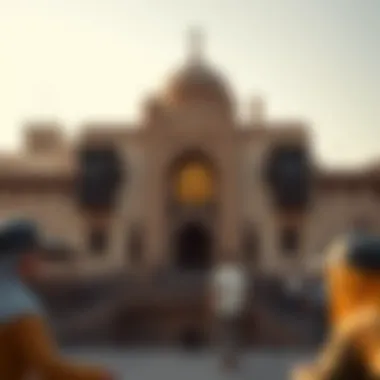

Visual storytelling in Old Dubai doesn’t merely occur randomly; it often aligns with specific themes that resonate deeply with both the locale and its history. These recurring elements help to unify the photographic narrative. Here are some notable themes:
- Contrast: One predominant theme is the juxtaposition of old versus new—worn-out walls next to glimmering facades, highlighting the dynamic evolution of the city.
- Everyday Life: Capturing daily scenes—whether it’s a vendor at the Spice Souk or families gathering along the Dubai Creek—offers a glimpse into local customs and interactions.
- Architectural Details: From intricate wooden doors to vibrant mosaics, focusing on details magnifies the craftsmanship and stories imbued in the historical architecture.
- Cultural Festivities: Documenting events like the Dubai Shopping Festival or local prayer gatherings gives insight into the vibrant cultural tapestry that characterizes the community spirit.
The combination of these themes not only creates a diverse portfolio for photographers but effectively communicates the essence of Old Dubai. When you piece them together, they create a compelling narrative that engages viewers and invites them to experience the charm and history of this remarkable city.
"Through the lens, one can travel not just to destinations but through time itself, appreciating the journey of those who walked before us."
For further exploration, you might find these resources helpful:
- Dubai History - Wikipedia
- Cultural Heritage Sites in Dubai - Britannica
- Photographic Arts in Dubai - Reddit
By understanding and appreciating the key themes in Old City photography, we are better positioned to not just preserve but to celebrate the unique story that is Dubai.
Notable Landmarks in Old Dubai
Dubai's old city is a tapestry woven with threads of history, culture, and architecture, enriching the fabric of the present-day metropolis. The landmarks within this part of the city serve as tangible connections to its past, inviting both residents and visitors to explore the stories embedded in their walls. Each landmark contributes uniquely to the portrait of Old Dubai, acting as a source of inspiration for photographers, historians, and curious souls alike.
The importance of these notable landmarks in photographing the old city can not be overstated. They are not merely background elements; they characterize the essence of Dubai's transformation from a modest trading post to an international hub. By capturing these structures, one can glimpse the Arabic heritage that underpins the fast-paced growth and modernization surrounding them. The role of these landmarks extends beyond their aesthetic appeal; they enhance the storyline of Old Dubai, bridging the gap between its rich history and the advancing contemporary scene.
The Al Fahidi Historical Neighborhood
The Al Fahidi Historical Neighborhood stands as a beacon of Dubai’s architectural legacy, exemplifying what traditional Emirati lifestyle was like before the waves of modernization swallowed much of the old heritage. This area is rigorously preserved with narrow lanes and wind-tower architecture displaying the ingenuity adapted to the local climate. In these alleys, you can spot tiny art galleries and museums that provide insight into the life of early Dubai—not to mention the stunning vantage points for photographers looking to capture the interplay of light and shadow among the old walls. Here, one can feel the pulse of the past resonating through every facet of the neighborhood.
Dubai Creek and Its Significance
No photographic journey of Old Dubai would be complete without a nod to the iconic Dubai Creek. This natural seawater inlet served as the lifeblood of trade and transportation, bridging the gap between old and new. It is along these banks that the heart of commerce beats: one can see traditional abras gliding across the water, ferrying people between Deira and Bur Dubai. For photographers, capturing the evening light dancing on the water in tandem with the skyline offers a compelling narrative, showcasing both the historic charm and the vibrant energy of the city.
Historic Souks: Traditions in Commerce
The souks in Dubai echo with the sounds of trading traditions that date back centuries. These bustling markets serve not just as commercial hubs but as living historical narratives, each contributing to Dubai's rich commercial fabric.
Spice Souk
The Spice Souk is an aromatic wonderland, bursting with vibrant colors and enticing fragrances. It showcases Dubai's traditional trade routes and culinary practices. The key characteristic of this market is how it offers an immersive sensory encounter; one can find spices from all corners of the globe stacked in charming piles, inviting onlookers to take a deeper whiff. This market stands out as a beneficial choice for this article because of its authentic atmosphere, allowing photographers to capture both the products and the interactions among vendors and customers. A unique feature of the Spice Souk is its narrow pathways, which create natural framing for mesmerizing photographs, but it can become overcrowded during peak hours, making patience a virtue for candid captures.
Gold Souk
The Gold Souk, dazzling with its intricate jewelry designs and shining treasures, is yet another essential landmark. It represents the opulence and wealth associated with Dubai and serves as a symbol of aspiration. The overwhelming display of finely crafted gold and precious stones elevates the market's relevance. This place shines brightly as a beneficial choice for anyone interested in capturing not just the products, but the culture surrounding jewelry trade and celebration. The Gold Souk's unique feature lies in its ability to attract a diverse clientele, come from tourists to locals, each bringing their aspirations for adornment. However, the challenge of photographing during peak hours arises due to the crowd, potentially clouding clarity in images.
Textile Souk
Lastly, the Textile Souk is a hidden gem that features an array of fabrics and patterns, celebrating the artistry of textile traditions. This market is notable for its vibrant fabrics like silks, cottons, and wools, providing an eye-catching backdrop for photographs. Visitors will notice how the market showcases the cultural diversity of Dubai’s population, as you can find materials from various countries rolled into one space. The Textile Souk is beneficial for the article as it represents the seamless blend of tradition and craft, offering photographers countless opportunities to capture the textures and colors reminiscent of the area's commerce history. The vibrant colors and intricate patterns are among the unique features that appeal to photography enthusiasts, while the narrow alleys can sometimes make maneuverability an issue, requiring a tad more effort to get the perfect shot.
Architectural Styles Reflected in the Photographs
Exploring the architectural styles that grace Dubai’s old city through photographs offers a unique window into the past. These images document not just structures but the cultural and historical evolution of the area. Each style conveys a message about the society that built it, marking a timeline of ingenuity and adaptation.
Photographs serve as an essential medium for capturing these architectural expressions, revealing storylines of cultural significance, technical prowess, and aesthetic value. From traditional designs that have stood the test of time to modern adaptations that breathe new life into historic structures, the photographs highlight an intricate dance between preservation and progress.
Traditional Wind Towers: A Cooling Innovation
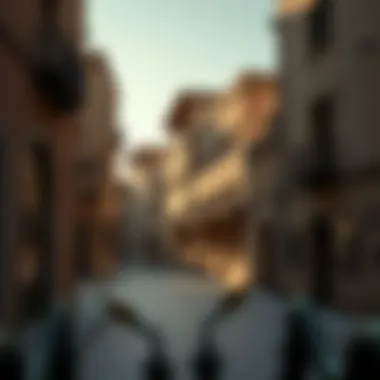

At the heart of old Dubai’s architectural identity are the traditional wind towers, locally known as barjeel. These remarkable structures were ingeniously designed to provide natural ventilation in an otherwise hot and arid climate. Typically rising above buildings, these towers capture the slightest breeze and direct it into the interiors below, a clever method of keeping homes cool long before the advent of air conditioning.
In photographs, the wind towers stand as symbols of sustainable living, displaying the resourcefulness of the builders. The slender, vertical forms with open slots can be seen adorned in the juxtaposition of earthy tones against bright blue skies, creating a stunning visual narrative.
The architecture of these towers connects modern viewers with ancestral wisdom in climate adaptation. Their significance isn't just monumental; they are reminders of an era when harmony with the environment was paramount to survival.
Bastakiya's Distinctive Designs
Bastakiya, often seen as the crown jewel of old Dubai, enchants visitors with its narrow lanes and unique architectural artistry. This area, characterized by its coral stone and plaster buildings, reflects Persian influences, which were integral to the lifestyles of the early residents. The photographs taken in Bastakiya not only showcase the architectural details like intricately carved wooden doors and beautiful latticework but also elicit a sense of nostalgia for a different time.
Each photograph captures the subtle nuances of light and shadow as the sun sets, enhancing the textures and colors of the structures. The beauty in these images lies in their ability to transport observers to bustling marketplaces of the past or intimate gatherings on a traditional courtyard.
In Bastakiya, architecture narrates the stories of its inhabitants and hints at the thriving cultural exchanges that took place long ago. The preservation of such distinctive designs in photographic form ensures that future generations can appreciate and learn from this rich heritage.
Modern Influences on Historical Structures
As Dubai continues to evolve, the old city reflects a remarkable blend of the old and new in its architecture. Photographs document this evolution, showcasing how modern influences have taken root while enhancing rather than overshadowing historical structures. The architectural dialogue includes the integration of contemporary materials and techniques while respecting traditional stylistic elements.
For instance, you might see a lavish café occupying a meticulously restored building, or innovative art installations seamlessly merging with centuries-old walls. Such contrasts highlight the dynamic relationship between past and present. Through photography, these juxtapositions become less about conflict and more about coexistence.
"Architecture is a visual art, and the buildings speak for themselves."
– Julia Morgan
The challenge lies in ensuring development does not erase the essence of the old. Photographs capture this balance, serving as both documentation of change and plea for thoughtful preservation.
Such images amplify the conversation among real estate agents, investors, and developers about the importance of maintaining a dialog between history and modernity in urban planning, encouraging considerations of ethical development that honors heritage.
By reflecting on these architectural styles through photographs, we foster a deeper appreciation for what it means to inhabit a place where past and present coexist vibrantly.
Social Life in Old Dubai: A Photographic Journey
The social fabric of Old Dubai presents a narrative rich in diversity and tradition, which is often best captured through the lens of a camera. Seeing this former trading hub through photographic depictions offers insights not only into the people but their daily lives and customs. This section accentuates the vital role social life plays in creating a vibrant picture of Old Dubai, enriching our understanding of its past and present.
Daily Scenes from the Past
In the heart of Old Dubai, daily life thrived around the markets and traditional buildings that framed the streets. Photographs from years gone by reveal lively scenes of vendors hawking their wares, children playing in the narrow alleyways, and families enjoying time together at local cafes. Each image tells a story—the basket of spices overflowing at the Spice Souk captures the bustling atmosphere that once filled the air with exotic scents.
"Photography freezes moments in time, allowing us to trace back the footsteps of history."
The significance of these snapshots cannot be overstated. They serve as cultural documentation, preserving traditions that would otherwise be swept away by the tides of modernization. Many photos display the spontaneous interactions between locals and visitors, illustrating a sense of community that pulses through the Old City's streets.
Capturing such scenes not only paints a picture of the daily grind but also highlights the resilience of these traditions amidst change. Those images of men engaged in conversation at a tea stall or children flying kites on rooftops evoke a nostalgia that connects modern Dubai to its roots. Each photograph bears witness to a lifestyle that thrived long before the high-rises overshadowed the skyline.
Cultural Events and Festivals
In addition to everyday life, cultural celebrations in Old Dubai offer a glimpse into the spirit of the community. Festivals such as Eid and the Dubai Shopping Festival serve as focal points for social gatherings, drawing people together in vibrant displays of color and energy. Photographers capturing these events document not just the revelry but the underlying cultural significance.
The lens might showcase beautifully adorned homes lit with lanterns or families wearing traditional dress, as the streets transform into open-air galleries of celebration. Through this visual storytelling, one can appreciate how these events strengthen bonds among community members and honor their heritage.
More than just festivities, these photographs also reveal how social life oscillates between nostalgia and innovation. For instance, while some might hold on to traditional dance forms, others might infuse modern performances with cultural elements, creating a unique blend that reflects Old Dubai's evolving identity.
In summarization, the photographic journey through the social life of Old Dubai is significant not merely for aesthetic reasons but as a means to comprehend the intricate layers of community life. The images foster connections with the past while illustrating the ongoing dialogue between heritage and contemporary living.
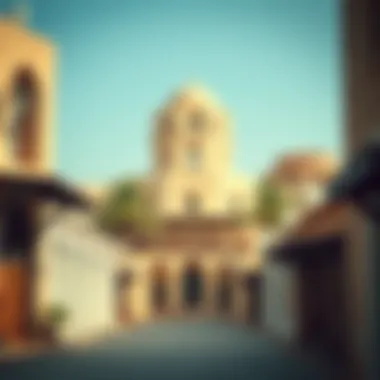

Impact of Modernization on Old Dubai
The discussion of modernization in Old Dubai is paramount when investigating the intricate tapestry that comprises the city’s history and identity. As Dubai races forward into the future, embracing the rapid pace of urban development, it becomes increasingly vital to assess how these changes harmonize—or clash—with the region's heritage. Understanding this balance is essential for investors and homebuyers who look towards the city not just as a marketplace but as a living entity steeped in stories of the past.
Modernization, while often associated with economic growth and technological advancements, presents a double-edged sword. On one side, it introduces new opportunities, improved infrastructure, and a higher quality of life; on the other, it risks eroding the unique cultural landmarks that define Old Dubai. The impact of modernization is thus both significant and multifaceted, warranting a closer examination.
The Balance Between Development and Heritage
In evaluating how to strike a balance between the relentless push for development and the preservation of heritage, one must consider the implications of each decision. Developers today face the challenge of integrating modern designs with the rich historical fabric of Old Dubai. This often involves repurposing old structures or, conversely, constructing new ones that respect the traditional motifs and architectural styles.
Key elements in finding this balance include:
- Public Awareness: Raising awareness about the value of heritage sites can lead to more community support for preservation efforts.
- Architectural Guidelines: Establishing development guidelines ensures that new constructions complement existing historical structures. This can be seen in the Al Fahidi Historical Neighborhood which showcases careful restoration alongside modern amenities.
- Collaboration with Local Communities: Engaging with those who have lived in the area for generations can provide insights that guide the preservation process. Their stories, imbued with nostalgia and pride, often hold the keys to understanding the fabric of the community.
Yet, some argue that should light on modernization be too dim, it could stifle economic progress and innovation. Thus, it’s a dance between new and old, a delicate tango requiring finesse and understanding.
Photographs as Historical Documents
Photography plays a crucial role in documenting the shifting landscape of Old Dubai, serving as both a time capsule and a narrative tool. These images do more than capture mere aesthetics; they encapsulate the very soul of a place, preserving its essence for future generations.
Photographs serve as historical documents that reveal how much the city has transformed, showcasing significant socio-economic changes over time. They bear witness to the mythology surrounding certain sites and provide tangible evidence of the effects of modernization.
A few important points about photographs as historical records include:
- Visual Storytelling: Each snapshot tells a story; from bustling souks to quiet alleys, these images portray life as it was.
- Visual Archive: They create a visual archive for researchers and historians, assisting in understanding architectural styles and urban development trends.
- Cultural Reflection: Photography also captures cultural practices, be it traditional business transactions in the souks or modern lifestyle adaptations.
As such, photographs don’t just freeze the moment; they facilitate a dialogue between the past and present, urging modern citizens to acknowledge and remember where they came from amidst the tide of growth.
"In a world carried away by haste, images of Old Dubai act like anchors, reminding us of the beauty that lies in our roots and the stories that have shaped our identity."
By synthesizing the narratives woven through photographs with the ongoing modernization efforts, stakeholders can appreciate what makes Old Dubai unique while navigatng its future wisely.
End: Reflections on Old City Photography
In concluding this exploration of Old Dubai through the lens of photography, it’s crucial to underscore its significance as a powerful medium for preserving history and culture. Each photograph, taken in the bustling lanes of this ancient city, serves not just as a snapshot, but as a profound narrative—a visual story of transformation, resilience, and identity. Photographic windows provide viewers with a glimpse into the lifeblood of a place that has seen the ebb and flow of ancient traditions melded with the relentless march of modernization.
Photography in Old Dubai is not merely about aesthetic beauty; it encapsulates the zeitgeist of a community. These images offer an avenue for reflection, allowing both locals and visitors to engage with the city’s past while contemplating its future. For investors and homebuyers, understanding this historical context enriches their appreciation of the contemporary landscape, revealing layers of value that extend beyond brick and mortar.
Moreover, as Dubai continues to develop, the role of photography will remain indispensable. It serves as a crucial tool for documenting the ongoing story of a city that is perpetually in motion. Every photograph captured in the old city becomes a critical piece of the puzzle, contributing to a broader understanding of how heritage can coexist with innovation and growth.
“Photography is the only language that can be understood anywhere in the world.” - Bruno Barbey
Lessons from the Old City Narrative
The narrative woven through the photographs of Old Dubai offers several valuable lessons that resonate with various audiences. For one, it highlights the importance of community. The bustling souks, the warmth of local interactions, and the rich tapestry of culture reflect a society that thrives on connection. This can inspire current and future real estate development initiatives to consider community dynamics as fundamental when planning new projects.
Secondly, the narrative teaches resilience. Dubai’s old city has weathered myriad changes, from the quiet trade routes of the past to becoming a global hub. This adaptability is a reminder that growth does not have to erase history. Successful preservation efforts honor tradition while paving the way for modernity. Real estate professionals should factor in these elements when assessing the long-term value of properties located in historically significant areas.
Future of Historic Preservation in Dubai
As the skyline of Dubai continues to reach for the stars, the imperative for historic preservation becomes ever more pressing. Stakeholders, including developers and policymakers, must recognize the inherent value of the old city, not only in cultural terms but also as an attractive element for tourism and investment. The fusion of modern architecture with carefully safeguarded historical sites can create a compelling narrative that draws both visitors and new residents.
Efforts to safeguard these precious sites could take various forms. For example, initiatives could include government policies aimed at ensuring sustainable development, as well as incentivizing private investments in restoration projects. Collaboration between local communities, historians, and entrepreneurs may also breed innovative approaches to preserve the fabric of Old Dubai while accommodating the needs of a growing populace.
• Education: Increasing public awareness about the significance of historic sites. • Policy Formation: Establishing regulations that protect architectural integrity while allowing for development. • Community Engagement: Encouraging participation in preservation initiatives, making it a collective responsibility.
The future of historic preservation in Dubai holds the potential to not only protect the old city’s charm but also educate future generations. In this way, the photographs that document the ever-evolving narrative of Old Dubai become crucial artifacts, urging us to reflect on where we come from and how we choose to move forward.
